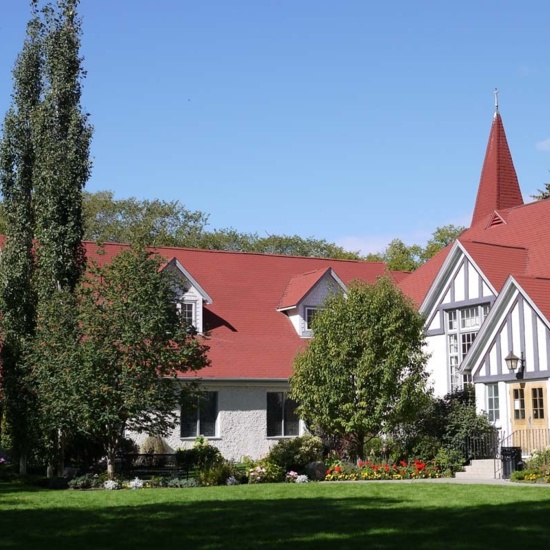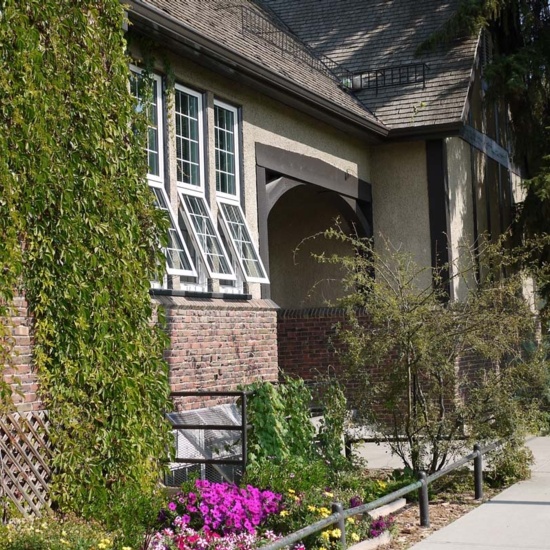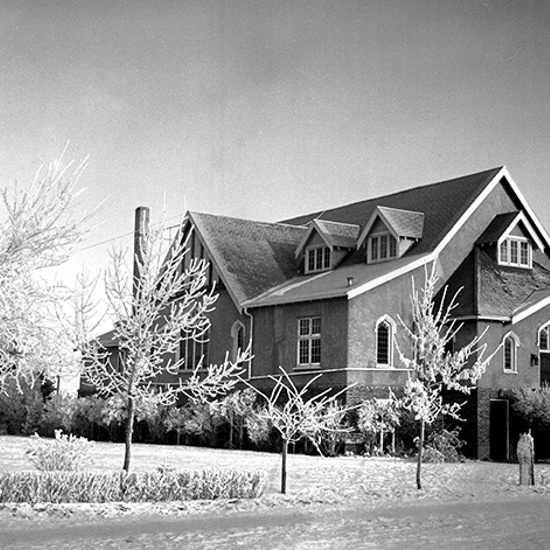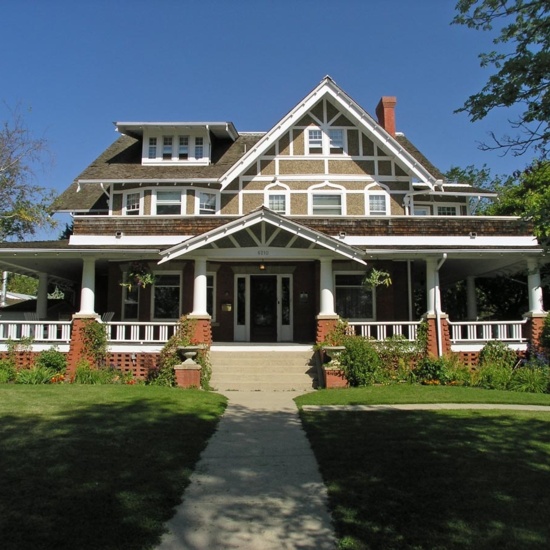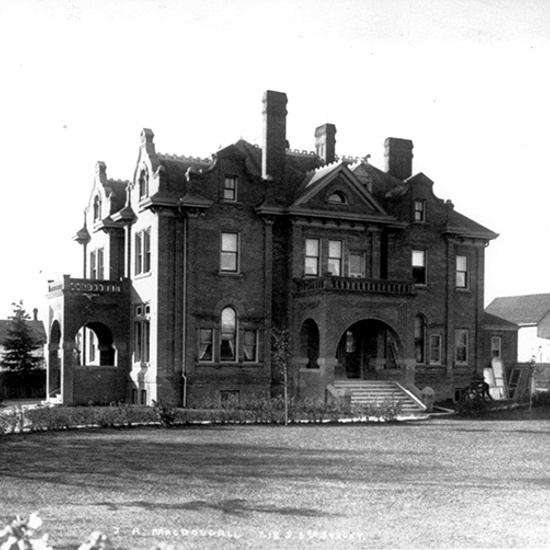Tudor Revival
Tudor Revival architecture was popular in Edmonton in the 1930s, and can evoke responses for its storybook qualities.
Tudor Revival architecture was popular in Edmonton in the 1930s, and can evoke responses for its storybook qualities.
The earliest Tudor Revival buildings date from the 1890s, but this style became particularly popular in Edmonton in the late 1920s and 1930s. The style drew strong influences from medieval England, but added elements seen in Queen Anne and other Victorian era styles as well. Tudor Revival is distinguishable by the use of steep gables, decorative half-timbering and massive chimneys. It was used in Edmonton for many different structures, including churches, schools, and residences.
Characteristics
- Steeply pitched side gable roofs with a dominant intersecting front gable
- Decorative half-timbering
- Large chimneys with chimney pots
- Decorative arched entryways
- Groups of tall, narrow, multi-paned windows
- Used a variety of exterior materials including brick, stone, stucco, and wood
- Decorative brickwork, particularly in chimneys
Details
Structures
C. W. Cross Residence
Christ Church
Dr. Eardley Allin Residence
Glenora School
Highlands United Church
Holgate Residence
MacLean Residence
McDougall Mansion
Character Defining Elements
Balcony, Bay window, Brackets, Brick cladding, Brick structure, Cantilever projections, Carving, Chimney, Chimney pots, Clinker brick, Corbelling, Cornice, Cross gable roof, Date stone, Dormer, Eaves, Exposed rafters, Field stone chimney, Finial, Flared eaves, Flat roof, Gable dormer, Gable roof, Half storey, Half-timbering, Intersecting gable roof, Intersecting hipped roof, Irregular footprint, Keystone, Lintel, Mullion, Nailed frame structure, One storey, Pebble dash stucco cladding, Pier or Pillar, Pilaster, Pointed arch, Porch, Portico, Shed roof dormer, Spire, Stained glass, Steeple, Stucco cladding, Three storeys or more, Tracery, Two & a half storeys, Two storeys, Veranda, Voussoirs, Wooden shingles

